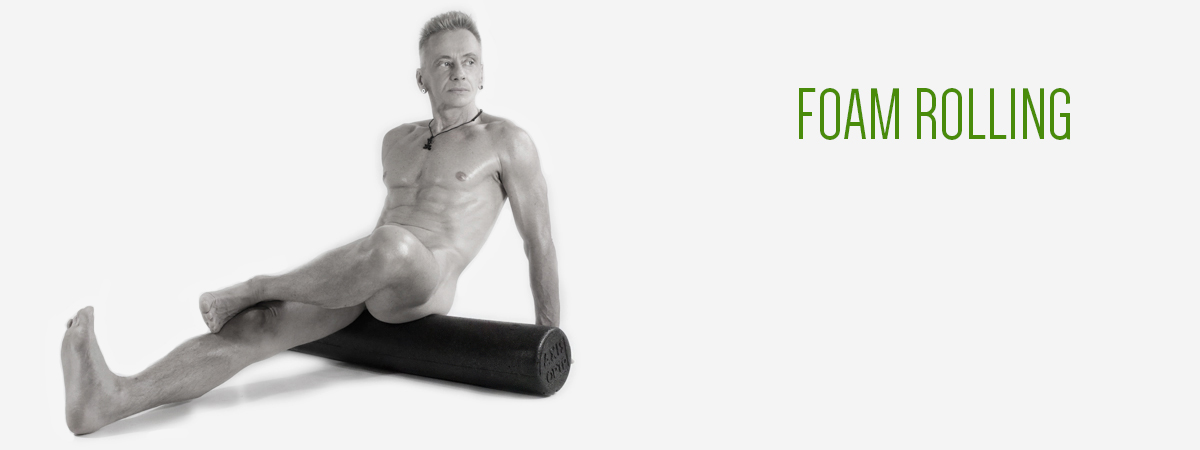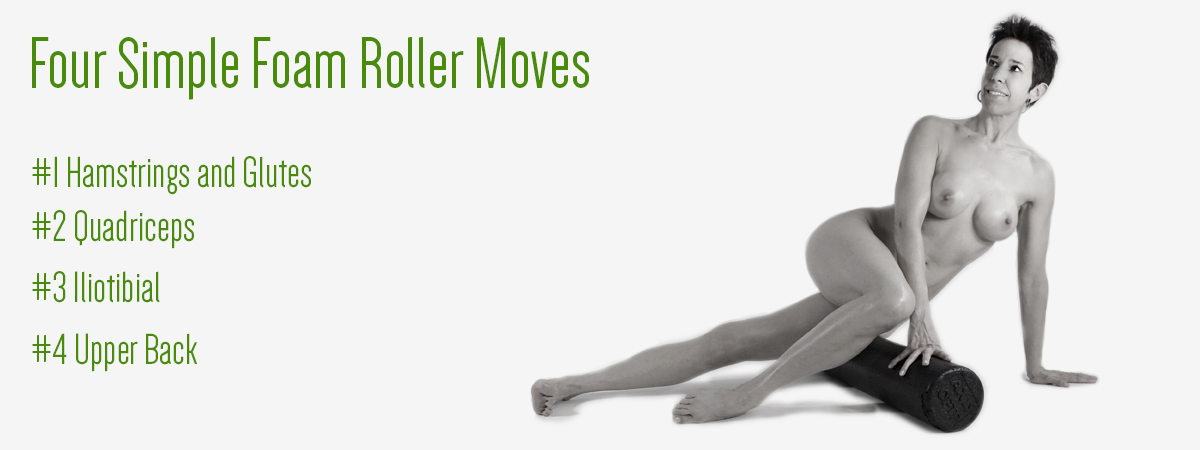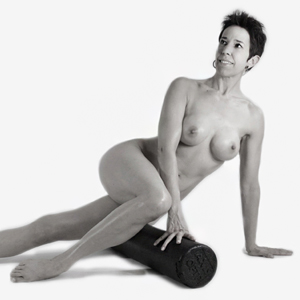
From the gym to Target, nowadays you can see foam rollers everywhere. While they have become more mainstream, to some, foam rollers still remain a mystery, even to fitness trainers.
Foam rolling is essentially a form of self-massage called self-myofascial release (SMR) to release muscle tightness or trigger points. If you don’t have a foam roller, you can perform SMR with a tennis ball, Theracane or even your own hands. By applying pressure to specific points in your body, you can help in muscle recovery and assist your muscles to return to normal functioning, which means that your muscles are healthy, elastic and ready to perform at any moment.
Maybe you are wondering what myofascial release means? You are not alone… Fascia is a specialized system of the body and covers pretty much every part of your body and even interpenetrates every muscle, bone, nerve, artery and vein, as well as all your internal organs including the brain, heart, lung and spinal cord. The most interesting fact about the fascia is that it is actually a continuous structure that covers you from head to toe without interruption. Myofascial Release is a very effective technique that involves applying sustained pressure to connective tissue restrictions to release tension, eliminate pain, improve movement and ultimately restore your body back to its natural state.
While there are many reasons to incorporate foam rolling into your fitness routine, improved flexibility, increased range of motion in your joints, better circulation, stress reduction, reduced exercise related soreness and injury prevention are some of the major benefits of foam rolling.
Ideally you would foam roll every day and dedicate about 10 to 20 minutes to your SMR to work out any kinks. When you have an area of tension, start with short slow rolls for about 30 seconds and follow it up with longer, slower strokes over the whole length of the muscle. Now keep in mind, while you will feel great afterwards, it might feel uncomfortable or even hurt when you first start rolling. So take some slow, deep breaths.
If you are wondering how exactly you should use your foam roller, we have some simple foam roller moves for you to get started.

#1 Hamstrings and Glutes (Back of the legs and butt)
Many of us have extremely tight hamstrings because we are sitting at our desks all day. Tight hamstrings can be the cause of lower back pain, so foam rolling and stretching the hamstrings can be hugely beneficial. Start by sitting perpendicular on your foam roller and use your arms and legs to support yourself and adjust how much pressure you are applying to your legs. You want to roll yourself over the foam roller from your glues down to just about the knee. The slower you roll the more opportunity your muscles have to relax and release.
#2 Quadriceps (front of the leg)
The front of your legs can become just as sore and tight and to balance your body out is crucial. So after working out your hamstrings, roll over to give your quadriceps equal attention. Place the foam roller underneath your legs and support your body weight with your forearms. Keep your abs engaged at all time and roll yourself back and forth from your pelvic bone to just above your knees. You want to keep your feet off the floor for this one.
#3 Iliotibial (IT) Band
A tight IT band can result in knee and lower back pain, so giving it a little TLC with your foam roller is just what you need. To get to your IT band, position yourself with the side of your leg on top of the foam roller. Again, you decide how much pressure you put on your IT by using your arms to support you. Roll from just below the hip to the top of your knee, while you keep your other foot on the ground for support. Don’t forget to switch sides.
#4 Upper Back
Sitting at a desk all day along with stress can really take a toll on our upper back. To foam roll the upper back place the foam roller perpendicular to your body and lean your upper body against it. Place your hands behind your head for support and lift your hips off the ground. Gently roll from the top of your shoulder blades to the middle of your back. You want to avoid rolling directly onto your lower vertebrae.
When you are foam rolling, make sure you are slowing it down. Sometimes we see people at the gym that roll back and forth like it’s a race, but you want to slow it down to really give your muscle enough time to actually relax and begin to break up the tension in your fascia. And remind yourself to keep breathing even though it is tempting to hold your breath when the pain hits you.
So when is the best time to foam roll? Should you do it before your workout as a ‘warm-up’ or is it best to foam roll afterwards?
Foam rolling activates your parasympathetic nervous system which helps you to unwind and recover so the best time to foam roll is after your workout. But we know that a lot of times once you are finished working out you just want to hit the shower and be done. So try making foam rolling part of your bedtime routine. Take 15 to 20 minutes to roll as you unwind and get ready for bed. It’s the perfect time to turn on your parasympathetic nervous system and it helps your muscles to recover and reduce tightness. Your body and mind will appreciate it and fall asleep faster.
Don’t miss out on one of the most effective tools for recovery, injury prevention and physique-building. Those dense, round pieces of foam can deliver many of the same benefits as a therapeutic massage.
ARE YOU FOAM ROLLING, YET?
Joschi & Monika
#BoldNaked

Pingback: FOAM ROLLING | Nudie News
I like it when individuals come together and share
thoughts. Great website, continue the good work!